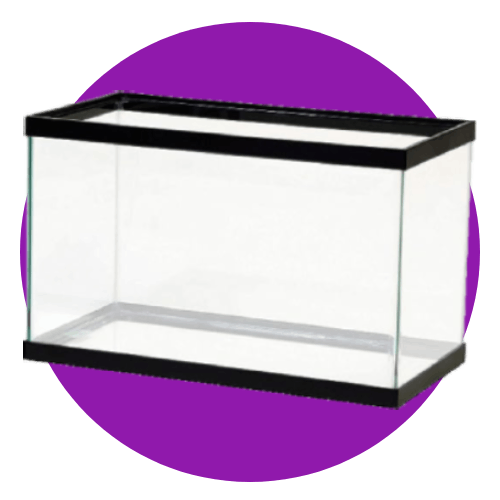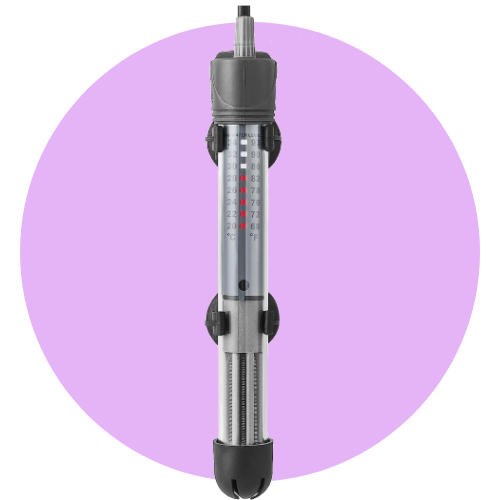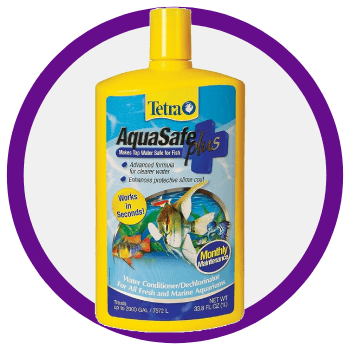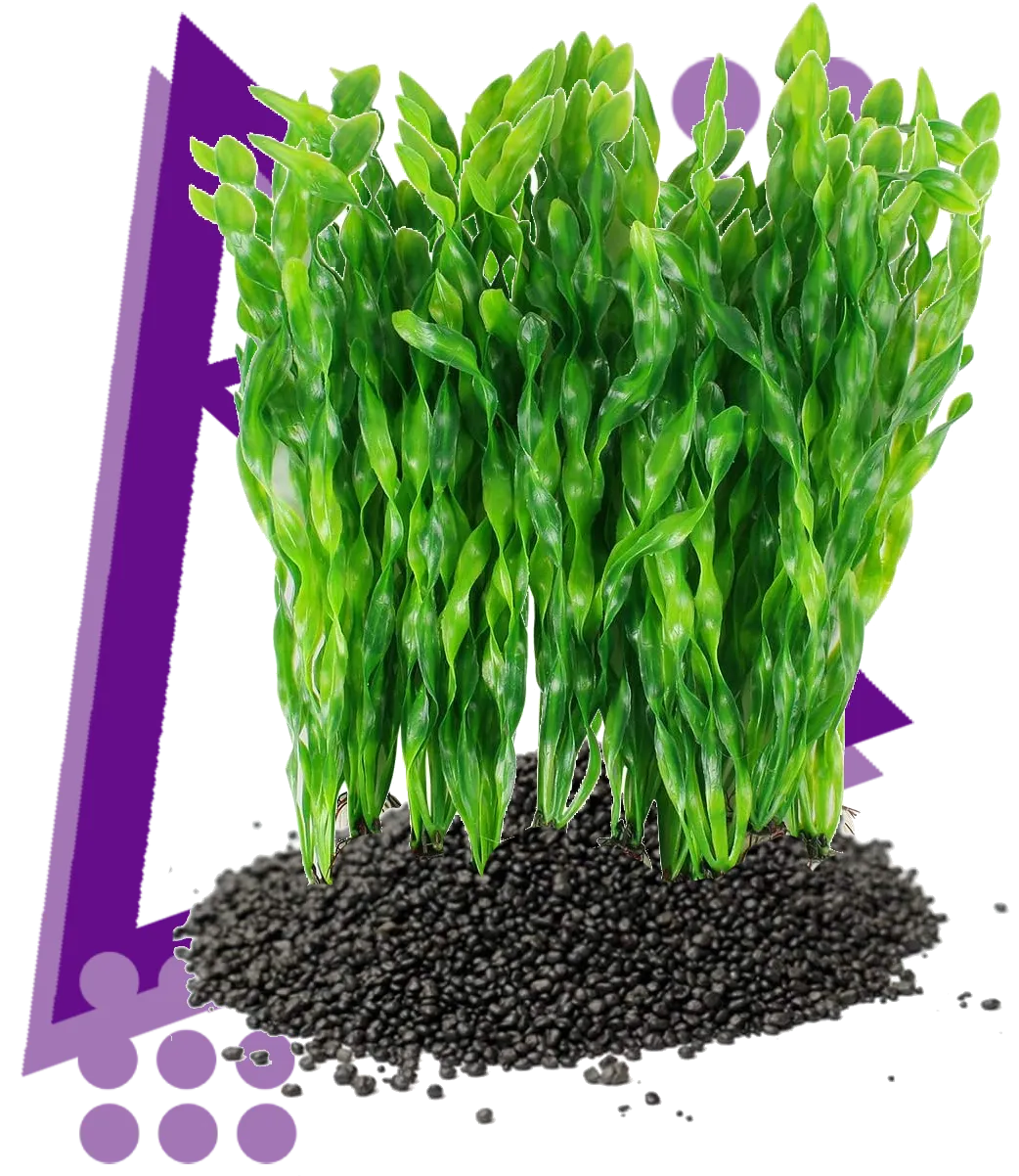
Chapter 2
The equipment you need for your fish to thrive
Now that you know what it takes to keep a fish tank, let’s focus on the logistics of it all.
By the end of this chapter, you’ll know:
- What tank size do you need
- Where to place it
- How many fish you can have
- What equipment do you need

Tank Basics
The Practical Guide
Choosing the right tank
Truth be told- there are a lot of options out there for tanks. before we dive into the specifics of it all, let’s take a quick look at how big of a tank you need and where you need to place it.
How big of a tank should you get?
As a rule of thumb, you want to have about 6 guppies per 10-gallon, with 10-gallons being the minimum size tank. To give you an idea of how big a 10-gallon tank is, it has the footprint of a laptop or your average backpack.
Single Sex VS Co-Ed
Single Sex
Pros
Males only: the prettiest fish with no change of breeding
Females only: females are less impressive and have low chances of breeding.
Cons
Some fish may display signs of aggression- especially in an all-male tank.
Co-Ed
Pros
Very little chance of aggression.
A functional ecosystem with a future generation of longevity built in.
Cons
Overbreeding and overpopulation might require culling.
*Female guppies can store sperm and become pregnant up to 9 times from a single mating. That means they may still become pregnant and give birth even if there are no males at the tank.
Get a co-ed tank.
Guppies give birth to live fry, but most don’t grow to adulthood because they get eaten by their parents (gross, I know- but totally normal). Your risks of aggression in a co-ed tank are very low, and it ensures a future generation.
If you have an aggression problem in your single-sex tank, the solution will be a bit more complex- you’ll either have to get rid of some fish, or increase the tank size and equipment and introduce the alternative sex.
In the event of a co-ed tank, you’ll want to keep about 1 male for every 2-3 females.
Where should you place your tank?

Direct sunlight can increase the water temperature of the water to unsafe levels.
Build your own VS Tank kit
Build Your Own
Pros
- Customization: Build a tank tailored to your preferences and available space, allowing for unique designs and sizes.
- Cost Control: Potentially lower costs as you can select budget-friendly materials and components based on your needs.
Cons
- Extra Work: You’ll nee to research and find the equipment.
Tank Kit
Pros
- Convenience: Tank kits come with pre-selected components, saving you time and effort in choosing compatible equipment.
- Complete Package: Kits typically include essential accessories like filters, heaters, and lighting, ensuring a well-equipped environment for your guppies.
Cons
- Limited Customization: Less flexibility in design and size compared to building your own tank.
- Cost: While convenient, tank kits may be more expensive than sourcing individual components, especially for larger setups.

Part 2 - Essential Equipment
The Equipment you can't live without

Filter
Essential for guppy tanks, a filter keeps water clean by removing debris and waste, fostering a healthy environment crucial for your guppies' well-being.

Filter
Maintaining a stable and warm water temperature, a heater is vital for guppies, preventing stress and ensuring optimal conditions for their health and vitality.
Other Equipment You'll Need

Siphon Pump
Simplifies water changes and removing debris from the substrate.

Water Conditioner
Removes harmful chemicals, making tap water safe for use in an aquarium.

Fish Net
A handy tool for safely catching and relocating guppies.

Testing Strips
Help you monitor water parameters, ensuring optimal conditions for your guppies.

Bucket
An essential tool for water changes.

Tank Decor
Essential for guppies to feel safe and have a place to hide

Substrate, Plants & Everything Else
Other tank must have for longevity
Choosing the right substrate
Truth be told, you can’t go too wrong choosing a substrate.
As a general rule of thumb, you’re going for a porous, rounded-edge substrate. Examples are sand and gravel. Not only does the substrate play a big role in how your tank looks and feels, but it makes cleaning a whole lot easier.
Common examples are sand and gravel.
Another option that you’ll out there is crushed coral and limestone. While both are solid substrates, they both lower the pH levels in the tank. It’s easiest to avoid them for your first tank, but if decide you can’t live without them- you’d need to add driftwood to the tank to balance the pH.
Real Plants VS Fake Plants
Pros
- Natural environment: Plants provide a natural habitat for guppies, offering hiding places, reducing stress, and promoting breeding.
- Improved water quality: Plants absorb nitrates, a harmful waste product produced by fish, contributing to cleaner water.
- Stability: Plants help stabilize water parameters, making the environment more stable for guppies.
- Aesthetics: A beautiful planted tank can be an aesthetically pleasing addition to your home.
- Additional food source: Some plants can offer a supplemental food source for guppies, especially fry.
Cons
- Requires more maintenance: Plants require specific lighting, CO2 levels, and nutrients, demanding more upkeep than a non-planted tank.
- Costs more to set up: Planted tanks require additional equipment and supplies, such as lighting systems, CO2 injectors, and fertilizers, increasing the initial setup cost.
- Potential algae problems: Incorrect lighting, nutrient balance, or CO2 levels can lead to algae blooms, harming both plants and fish.
- Some plants are not guppy-friendly: Certain plants may harm guppies by being sharp, releasing toxins, or competing for resources. Researching suitable plants is crucial.
- Requires knowledge of plant care: Understanding plant requirements for lighting, nutrients, and CO2 is necessary for maintaining a successful planted tank.
Overall, a planted tank can be a rewarding experience for guppy keepers, but it requires more commitment and knowledge than a non-planted tank. I would only get plants if you enjoy gardening and caring for them- otherwise, they’re a chore.
Decoration as a whole
You might giggle when you read this next line, but- decorations are actually important to guppies.
Because guppies get predated on in nature, they find a lot of peace in hiding in foliage, rocks, and caves. Without them being able to hide they’ll get stressed out which will open the door for diseases and illnesses.
For your guppies to thrive, and your maintenance to be kept to a minimum, you should decorate your tank.
It can come in the form of store-bought decoration, live wood, and pretty much everything that comes to mind.
Your goal is to create a fun place for your guppies, one that includes different spots to explore and hide in.
check out the gallery below for some inspiration:
Recap
To get started with guppies, you’ll need a minimum of a 10-gallon tank- which will accommodate about 6 fish (2 males and 4 females)
Choose a stable place for your tank- away from windows, AC blow paths or hot pipes.
The 3 core piece of equipment you’ll need are: a tank, a heater, and a filter.
Other equipment you’ll need: water conditioner, siphon pump, fish net, decoration, testing strips and a bucket
